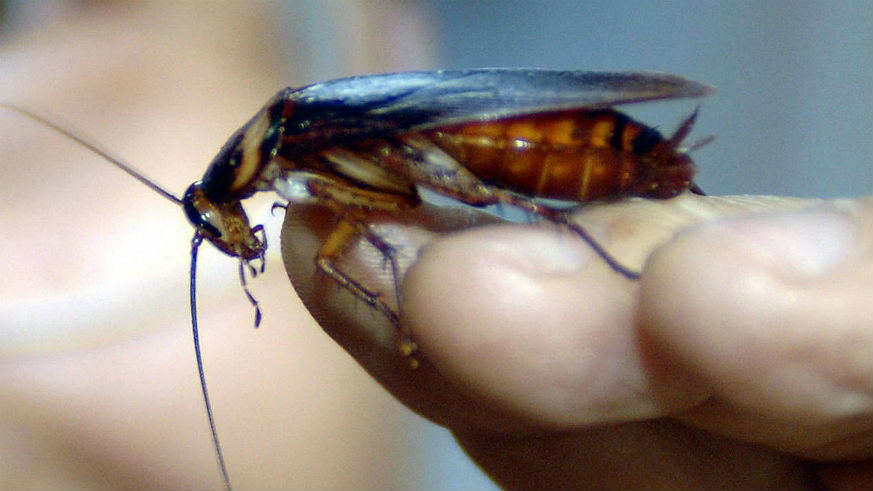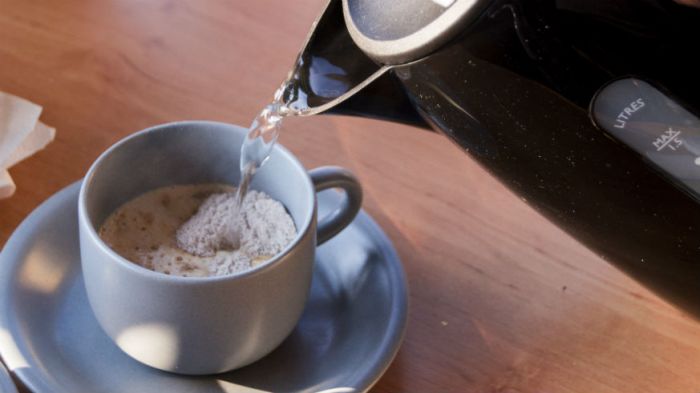Cockroach milk: It sounds like an article from The Onion that pokes fun at the cricket protein bar trend. Maybe that’s why people started Googling “cockroach milk snopes,” convinced it was a slightly disgusting Internet hoax. After all, we have figured out a way to “milk” just about anything. Non-dairy alternatives aren’t just made from nuts anymore. Rice milk has been around for some time, and the hottest new addition to your barista espresso bar is oat milk.
So, is this all just another weird Internet hoax or is cockroach milk a real thing? We break down what’s going on, why you’re seeing the phrase everywhere and why it might not be as crazy as it sounds.
Is cockroach milk a real thing?
So, is cockroach milk a real thing? If you haven’t picked up on what we’ve been building towards, yes, it’s very real. It’s not made up by The Onion, and there were no Photoshopped cartons involved. But you won’t find it in cartons even at that tiny health food store. So, what do you need to know about this new product?
What exactly is cockroach milk and how is it made?
First of all, unlike almond or coconut milk, cockroach milk is not made from grinding up the bugs and letting them soak in water before straining it down into a liquid we then call “milk.” So, no, they’re not the milk equivalent of cricket protein bars, in which you really are eating the bugs.
Cockroach milk is like good old cow’s milk — and just like with cows, not just any cockroach can be used for creating this product. A certain species of cockroach found in Hawaii gives birth to live young instead of laying eggs like the species you find in the nooks and crannies of your apartment. They produce a crystalline milk to feed these embryos, and that’s what’s harvested for cockroach milk.
Is cockroach milk good for you?
If you’re willing to give it a go, yes, cockroach milk is good for you. A 2016 study found that cockroach milk is a “complete nutrient” that provides all essential amino acids, carbohydrates and healthy fats. In fact, if you look at just one of the crystals produced by these cockroaches, it packs three times the energy of the same amount of buffalo milk, which is higher in calories (and therefore energy) than regular cow’s milk.

“The crystals are like a complete food – they have proteins, fats and sugars. If you look into the protein sequences, they have all the essential amino acids,” Sanchari Banerjee, one of the researchers on the team, told the Times of India in 2016 when the study was released. The milk also happens to be lactose-free, opening it up to a wider market than regular cow’s milk.
It’s also better for the environment, since it’s more sustainable than regular cow’s milk. Another company using insect milk, Gourmet Grubb (which makes ice cream out of “endomilk”) has a chart illustrating the difference between insect and cow’s milk when it comes to three different environmental factors: greenhouse gases, water consumption and footprint on nature. Cockroach milk clocks in at a fraction of the impact of regular cow’s milk.
It’s not without its detractors, though. Getting milk from cockroaches, as you can imagine, is difficult and tedious. What that means is that one person can harvest the milk of only a couple cockroaches in half a day, Inverse reports. Some also argue it’s not feasible since “scientists carve out the cockroach’s midgut with a scalpel to harvest the milk,” meaning the insects die in the process. The put some numbers on it, they report that getting 100 grams of cockroach milk “would involve killing upwards of 1,000 cockroaches.”
So don’t expect to see cockroach milk hit shelves any time soon, and when it does, it might not be in the form you’re expecting. Inverse reports, after talking with a researcher who worked on a study involving cockroach milk, that it would most likely be introduced to the market in pill form.





















